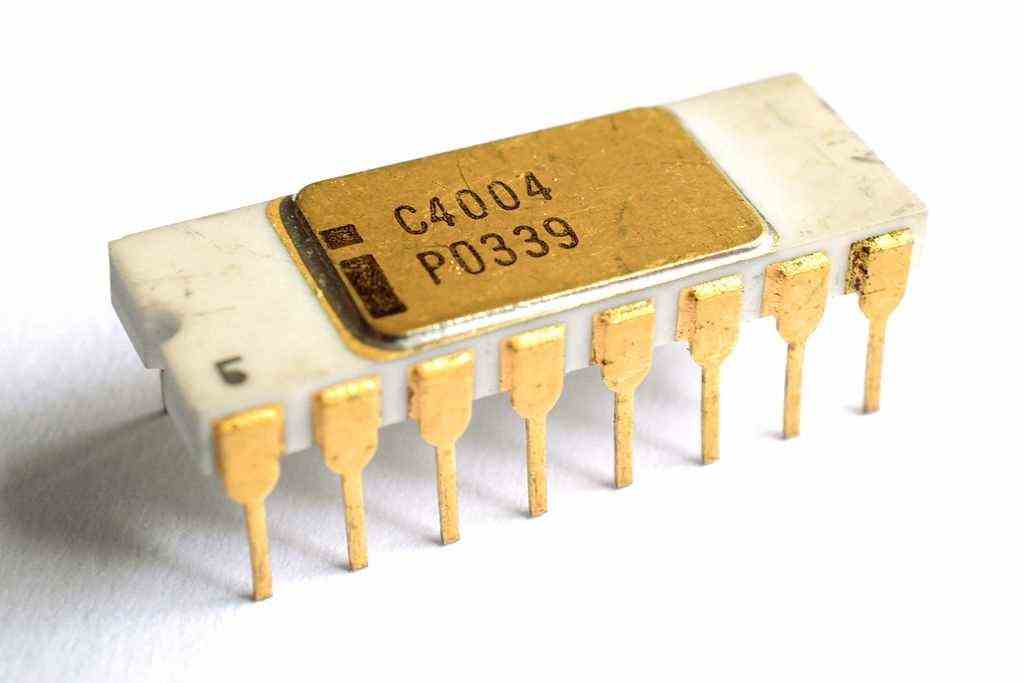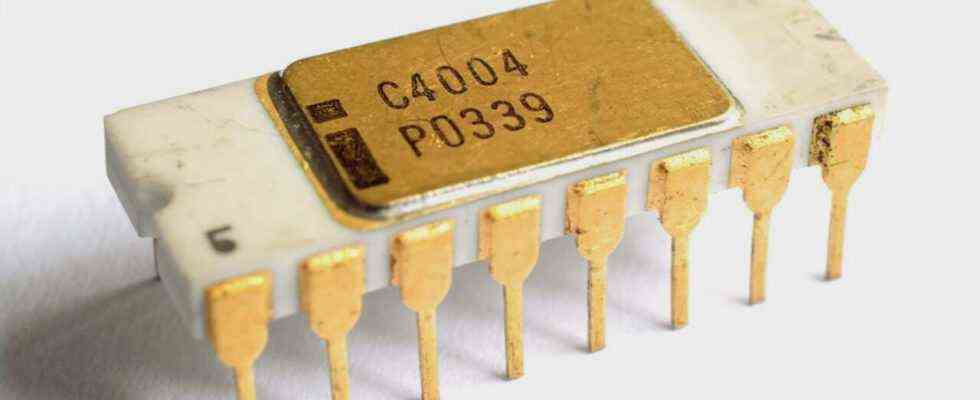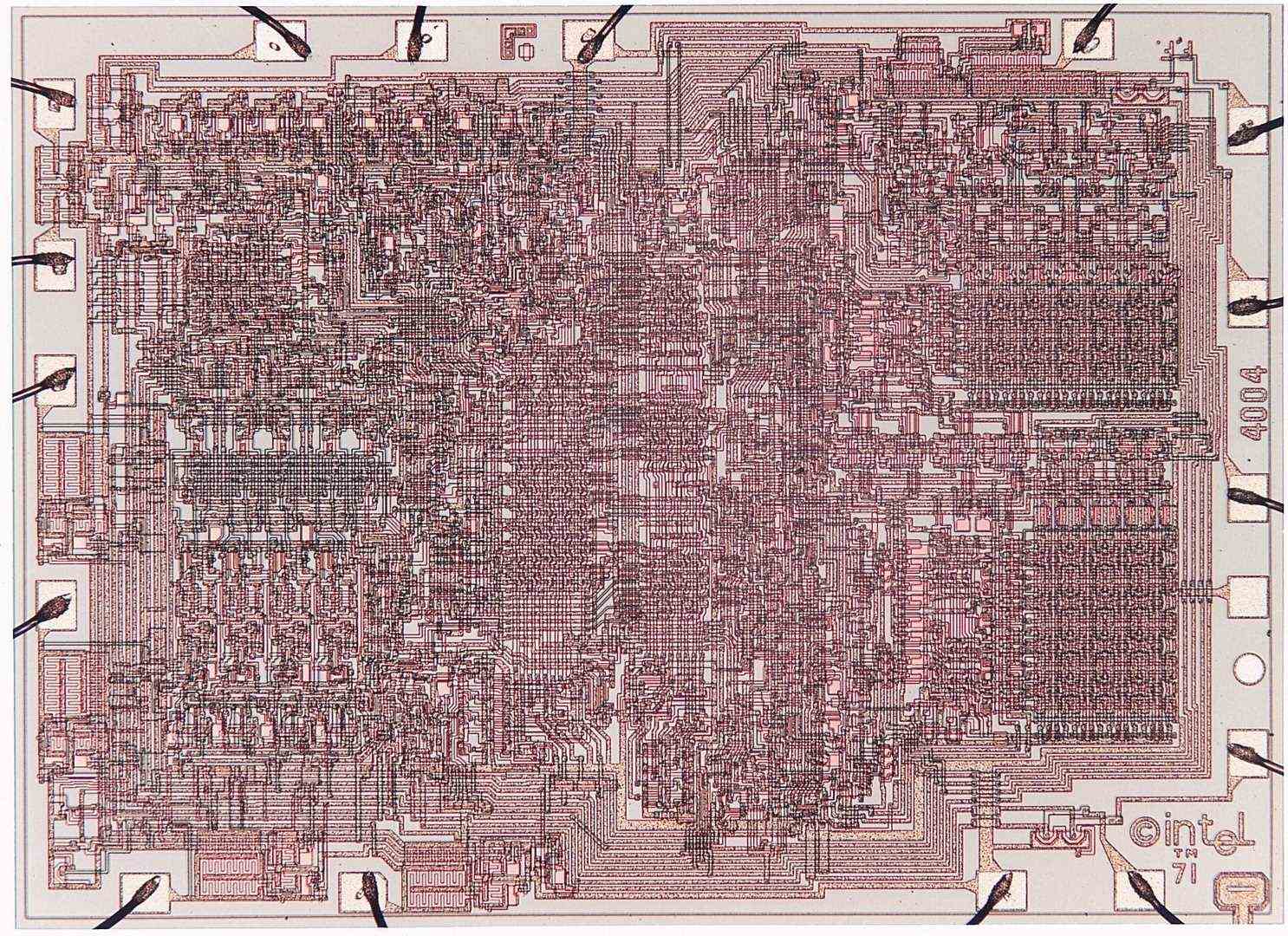Exactly 50 years ago today, the first mass-produced, over-the-counter microprocessor, the Intel 4004 with a clock frequency of 750 kHz and around 2,300 transistors. At the time manufactured by MOS Technology at 10,000 nanometers, which is almost unimaginable today, the 4-bit processor set completely new standards.
How the Intel 4004 came about
The very first mass-produced microprocessor, later known as the Intel 4004, was launched in 1969 by Busicom, a Japanese manufacturer of mechanical and electronic calculating machines, from Intel. So Intel didn’t develop it itself.
The American electrical engineer is generally considered to be the creator of the first micro-architecture Ted Hoff, which was ultimately not involved in the development of the Intel 4004, but is still considered one of the three forefathers of the CPU today. Ultimately, the design provided Federico Faggin, which in 1970 by the semiconductor manufacturer Fairchild switched to Intel and previously the silicon gate technology (SGT) had developed. The third developer was Masatoshi Shima, who assisted Federico Faggin and wrote the software for the Busicom 141-PF that was operated with the 4004.
As the fourth engineer in the league was also Stankley Mazor, who was particularly involved in software development, was jointly responsible for the creation of the first commercial processor. He too was one of the assistants in the team led by chief developer and project manager Federico Faggin.
In November 2010, former US President Barack Obama signed the microprocessor fathers with the National Medal of Technology and Innovation and honored her in particular for the invention of the Intel 4004.
The technical data of the Intel 4004
The Intel 4004 is a 4-bit microprocessor and is considered the first single-chip microprocessor in the world to be mass-produced. It was manufactured in 10,000 nm (0.01 mm). Although the data bus of the Intel 4004, which had a total of 16 registers, was only 4 bits wide, the instruction width was 8 bits. The design, originally created exclusively for Busicom and their calculators, was later bought back by Intel for $ 60,000.
The technical specifications of the Intel 4004 are as follows:
- 10,000 nanometers (0.01 mm)
- Data address space with 5,120 bits
- 640 bytes of RAM and 4,096 bytes of ROM
- Made from a 2 “wafer with 5 layers
- Made in PMOS-Process by MOS-Technology
- 2,300 transistors on a dual in-line package (DIP)
- 46 commands and 8 cycles per instruction
- 500 to 750 kHz clock frequency
- 15 volt operating voltage
Today, in particular, the C4004 in white ceramic with a gold cap and visible conductor tracks (“gray traces”) is one of the most sought-after collector’s items and achieves very high sales of several thousand euros at auctions.
Intel 4004 and Intel Core i-12000 in comparison
For the anniversary, Intel itself compares the Intel 4004 with the current top model Core i9-12900K (test), but ultimately every current processor, every current GPU or even high-performance computing switch clearly shows the development of the semiconductor industry over the last 50 years has completed: Complexity, clock rates, instruction set and width no longer have much in common with the veteran.
To put it into perspective: The Intel Core i9-12900K (test) clocks with up to 5,200,000 kHz (5.2 GHz) and thus around seven thousand times as high as it was possible in 1971 with a maximum of 750 kHz and while Intel’s original CPU still does 16-pins, CPUs of the Alder Lake-S series require a total of 1,700 connections to the LGA 1700 socket in order to be in contact with the rest of the platform, including RAM with dual-channel interface, PCIe graphics cards and I / O including Thunderbolt 4 to pedal, but also to absorb up to 300 watts of electrical power.
This year marks the 50th anniversary of the 4004 chip. Think of how much we’ve accomplished in the past half-century. This is a sacred moment for technology. This is what made computing really take off!
Pat Gelsinger, Intel CEO
What makes the Intel 4004 so special compared to its time is the fact that as early as 1971 it offered the performance for which huge calculating machines still required entire rooms in the 1950s and 1960s and were not much larger than a human fingernail.



The website CPU-Galerie.de presents the total of four models of the CPU, the Intel C4004, the C4004 with visible conductor tracks, D4004 and P4004that were produced until October 1981 in a nice overview.

Was this article interesting, helpful, or both? The editors appreciate every support from ComputerBase Pro and deactivated ad blockers. More about advertisements on ComputerBase.


